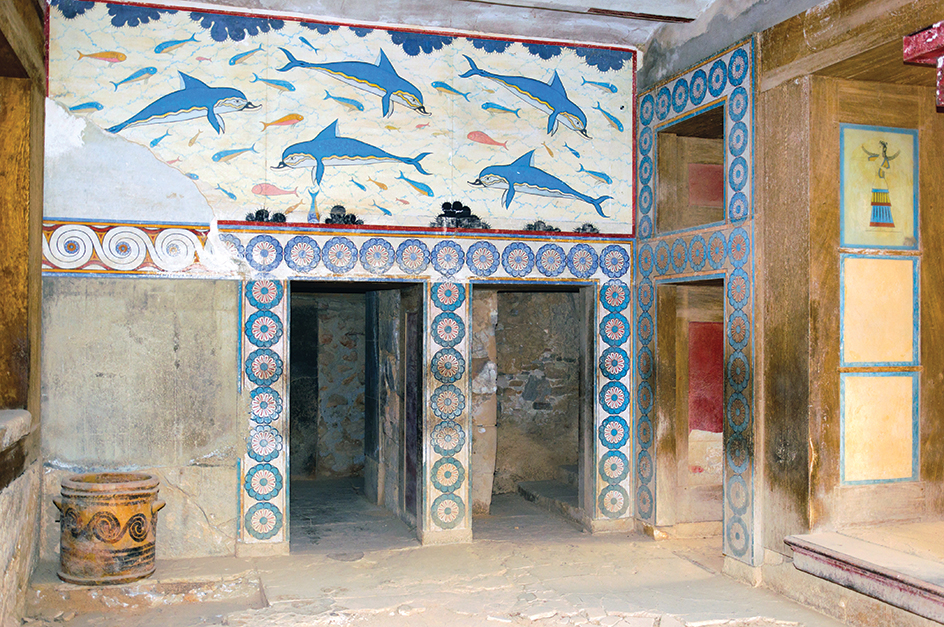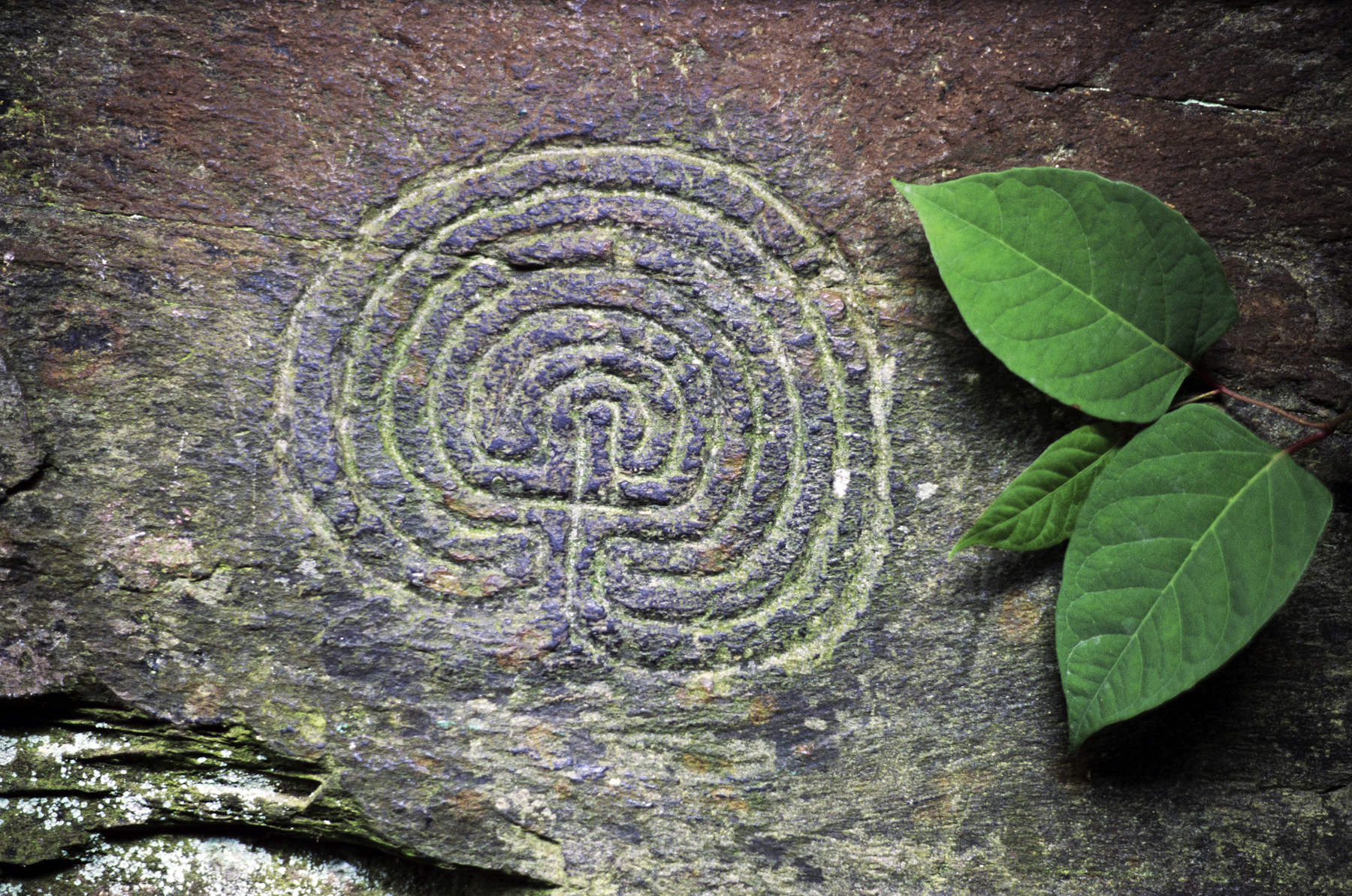Minoan culture arose on the island of Crete in the Mediterranean Sea during the Aegean Bronze Age (about 3000 to about 1100 B.C.) It is named for Minos of Knossos, a legendary king of Crete. According to tradition, Minos trapped the Minotaur, the half-man, half-bull son of his wife, Pasipahe, in a labyrinth. When the British archaeologist Arthur Evans first unearthed a palace at Knossos in the early 1900’s, its labyrinthine plan reminded him of the story of Minos and the Minotaur. Because there was neither archaeological nor textual evidence of what the ancient Cretans called themselves, Evans named the Bronze Age culture of Crete Minoan. 
The development and prosperity of Minoan culture owed much to Crete’s fertile land. The Minoans were able to produce such commodities as olive oil, wheat, and wine. In addition, Crete’s favorable location on major Mediterranean trade routes allowed the Minoans to rapidly increase their wealth and political importance. The people’s skilled craftsmanship produced decorated pottery, jewelry, and magnificent textiles. Small villages throughout the island grew into large towns. Palaces were constructed at Galatas, Knossos, Mallia, Phaistos, and Zakros. Knossos was by far the largest town, with buildings adorned with frescoes and large, open spaces suitable for public gatherings. Frescoes are paintings made on damp plaster. The palaces were the heart of Minoan economic, political, and social life. Their large storage spaces held agricultural products that were distributed to the people. Important religious centers called peak sanctuaries were built on prominent mountaintops, where people could see them from afar.


About 1700 B.C., widespread destruction, probably from an earthquake, disrupted life on Crete. Many of the palaces were damaged. However, some were rebuilt quickly and on a much larger and more magnificent scale. Minoan civilization reached its height from about 1700 to about 1470 B.C. The Minoans established colonies on some islands in the Aegean Sea, including Cythera and Thira. Minoan culture spread farther than ever before, reaching mainland Greece and the coasts of Anatolia (Asia Minor). Knossos grew in power and prestige, and its cultural and political dominance were felt throughout Crete. The use of a complicated writing system that archaeologists call Linear A became widespread. Archaeologists have found clay tablets and other objects on which the Minoans used Linear A to record economic transactions, administrative documents, and brief religious texts.
About 1470 B.C., a volcanic eruption on Thira, followed by a tsunami, had devastating effects on Crete. The chaos that followed these disasters may have contributed to social unrest and strife that led to the burning of many Cretan palaces and towns. Only the palace at Knossos survived. Around the same time, the influence of Mycenaean culture became prominent in the Aegean region. The Mycenaeans lived on the Peloponnesus, the southern peninsula of mainland Greece. Some scholars think the arrival of people from mainland Greece on Crete transformed Minoan culture and caused its demise. However, the Minoans left a cultural legacy. The Mycenaeans adapted the Minoans’ Linear A script to the Greek language, creating the Linear B script. They reproduced Minoan frescoes and styles of pottery and built palaces. Centuries later, ancient Greeks remembered the splendor of Minoan culture in their myths, thus acknowledging their debt to their Cretan ancestors.
